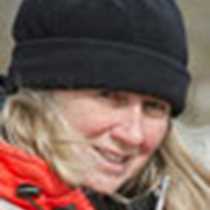Mainland, Orkney – Examining the past
The past is illuminated in fragmentary fashion, arising from the soil in bits and pieces, to be assessed and analyzed. Hypotheses change over time as we attempt to understand the whole. A foggy day reveals our location in much the same way. And it was in this manner that we explored the islands known as Orkney.
Kirkwall was no more than a shadow shrouded in the mist as we emerged to begin the day. The sea, mirror-like once again, blended with the sky making distances unfathomable. Gradually pieces of the puzzle were fitted into place as we fanned out, away from the quiet harbour. Deep green fields embraced the roadsides. Golden gorse hedgerows separated sheep from cattle, grasslands from newly ploughed land. Oystercatchers with carrot colored beaks probed in meadows, a shorebird at home away from the intertidal zone. Short-eared owls pursued fat and tasty voles. Little by little the curtain was drawn back on a rolling landscape where scattered fingers of lichen-covered rocks were a clue that much might be found beneath the soil of this verdant land.
They say “Orkney bleeds archaeology” and that seems to be true. Mysterious mounds arise, the contents of some known and others awaiting future explorations. What we know today might take on a different meaning when looked at from the viewpoint of tomorrow. Standing stones still march in a circle at the henge monument known as the Ring of Brodgar much as they have for possibly five thousand years. The stones of Stenness too are part of the tale. The village of Skara Brae, emergent from sand dunes after millennia of hiding, seemed to show that Neolithic peoples had an organized mind. Each home contained two beds, a dresser and a hearth and each had one entrance, protected from the wind.
The midday sun ripped the veil from the land bathing us in joyous warmth. The town of Kirkwall bustled with visitors and locals alike. The spire of St. Magnus Cathedral rose above it all, a beacon to aid in directing one back, back in time, back to the town and back to the ship from scattered and varied excursions. The Italian Chapel, Churchill Downs, the Head of Mull, the chambered tomb of Maes Howe, all presented different faces of the island and our impressions will be as diverse as the locations chosen to explore.
Interpretations of life on these far northern isles have changed in the past and will do so well into the future. One wonders if we will ever know the truth when our time capsule lacks direct observations from one who lived at the moment. All we can do is stand back, examine and look at the evidence from many different angles.




